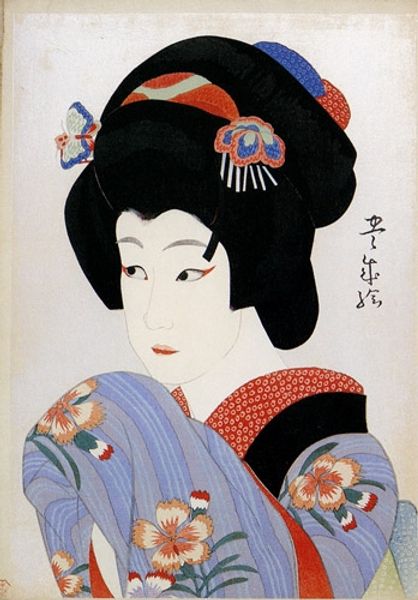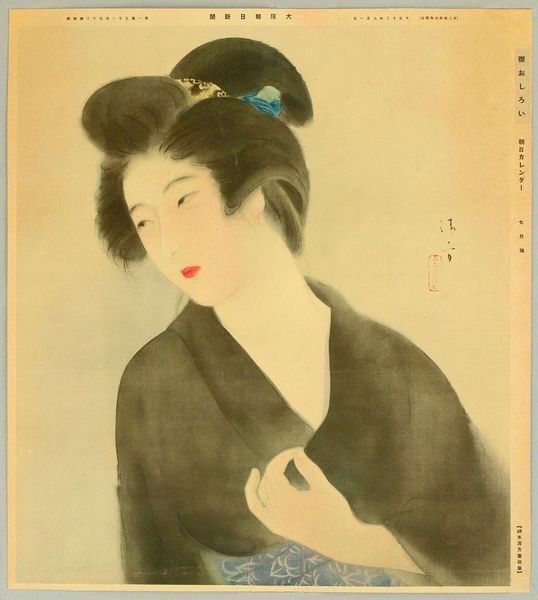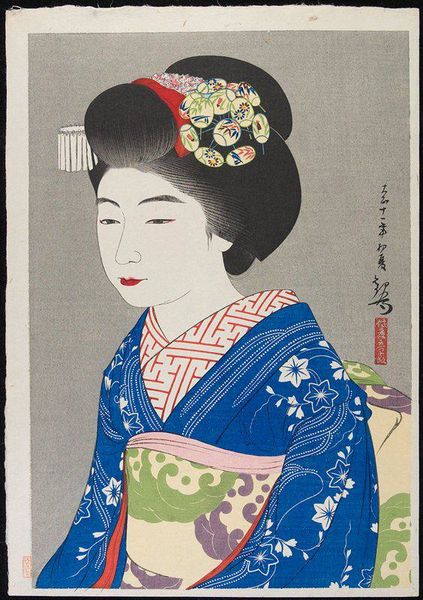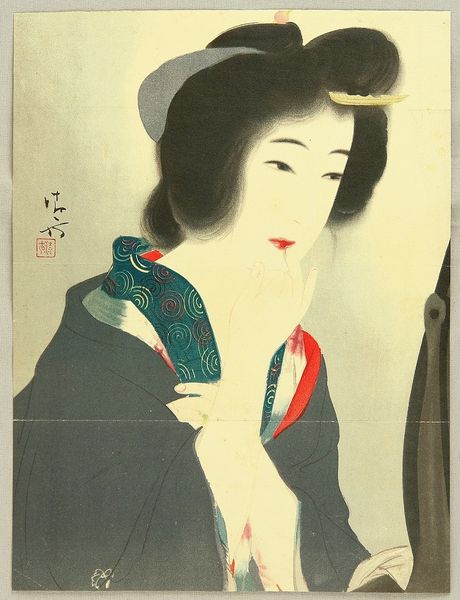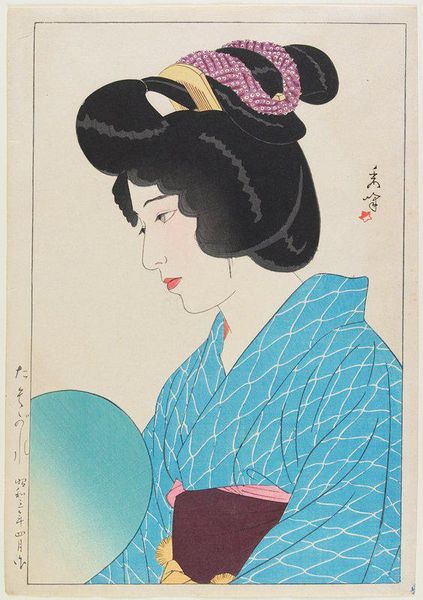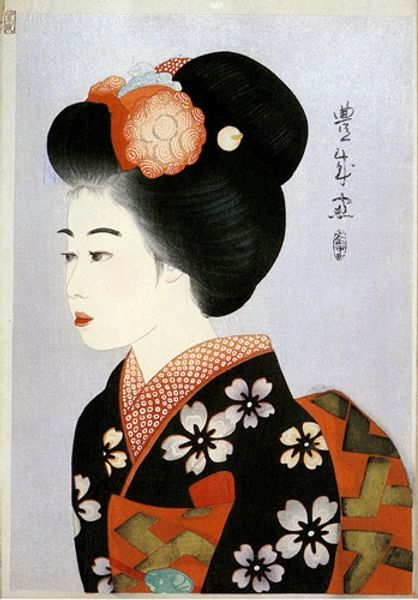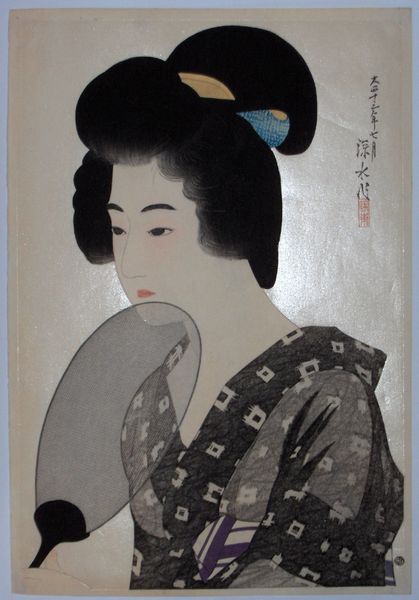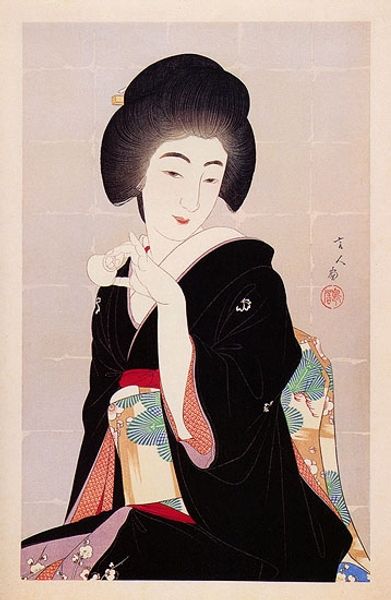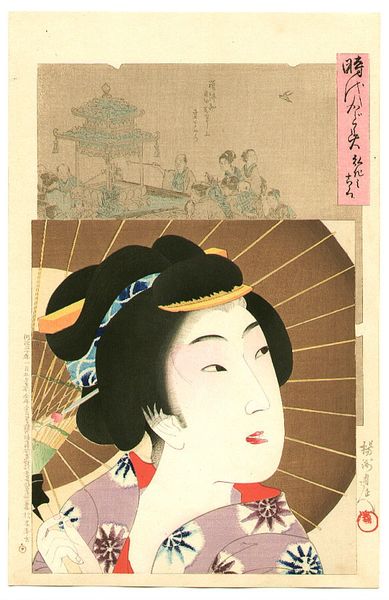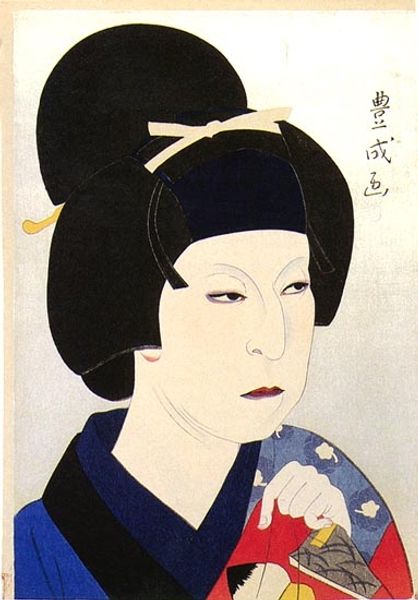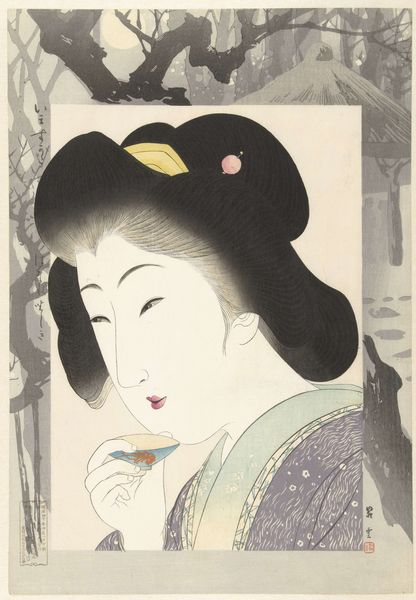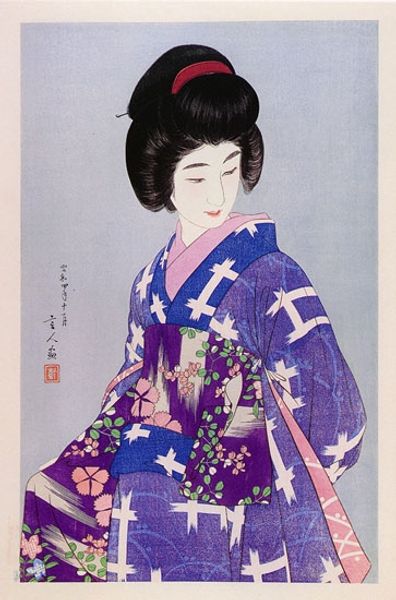
Copyright: Public domain
Editor: Here we have Yamamura Toyonari's woodblock print from 1922, titled "Sawamura Sonosuke I as Umegawa". The flat blocks of color are striking, but there’s something melancholy in the actor’s gaze. What symbols and meanings are layered in this portrait? Curator: The actor print, or *yakusha-e*, often acted as a form of celebrity portraiture in its day. It memorializes not just the person but a specific role. Umegawa, traditionally portrayed, is laden with codified signs of suffering and virtue. Do you see them? Editor: I notice the controlled lines, the simplified forms – almost like a mask. The averted gaze seems so calculated. Is it a commentary on the performance of emotion? Curator: Precisely! Ukiyo-e, this floating world, is a space where illusion and reality intertwine. Note the color choices. The controlled palette with the stark black hair, and the muted tones contribute to a restrained, yet dramatic effect. This deliberate stylization highlights the tension between the actor's true self and the persona they embody. It invites reflection on the weight of performance and the power of the image to shape perception. The flat perspective in ukiyo-e directs your gaze. What do you see, in the lower portion, close to the robe's trim? Editor: It's hard to make out - almost looks like an abstract doodle, but perhaps is actually significant. What could be suggested there? Curator: These minute details are meant to subtly comment on some aspect of the play and provide information. Like memory, iconography functions with fragments, the unsaid given equal, and even more significance. Editor: That’s fascinating – thinking of symbols as fragments of a larger cultural memory. This print really pushes beyond a simple portrait. Curator: Indeed, it becomes a mirror reflecting not only the actor's face but also the complex cultural landscape in which they perform.
Comments
No comments
Be the first to comment and join the conversation on the ultimate creative platform.
